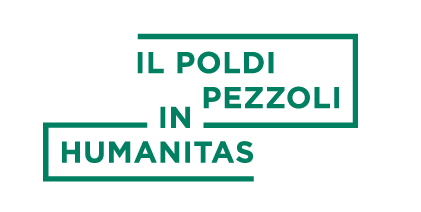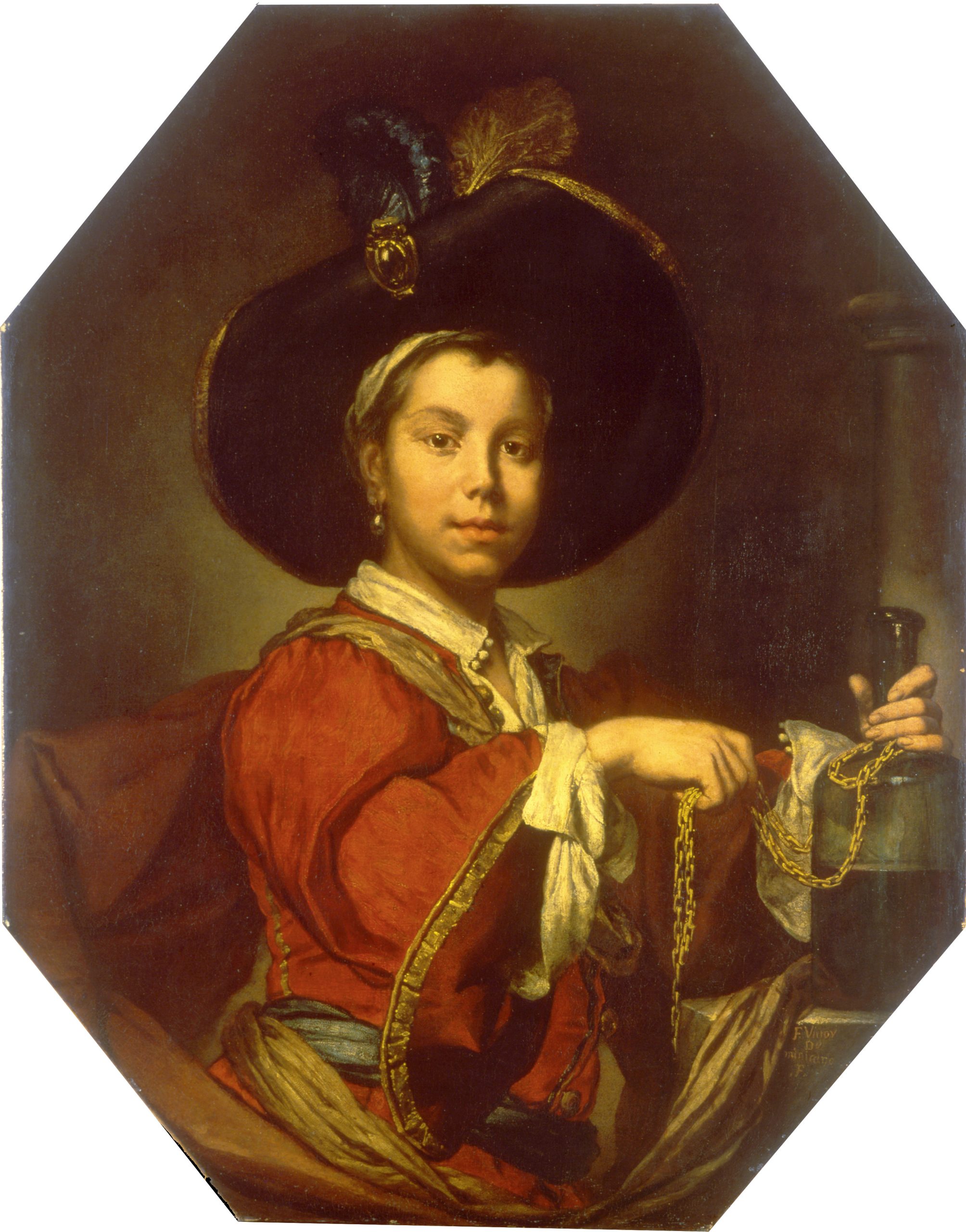
VITTORE GHISLANDI
(Bergamo 1665 – 1743)
Portrait of a Young Man or ‘L’Allegrezza’ (Gaiety)
Pre-1720
Oil on canvas
112×89 cm
Poldi Pezzoli Museum, Milan

ARTWORK
The young man wears a black hat with a wide, round rim adorned with feathers, a white shirt unfastened at the neck, a red jacket and a blue belt. A yellow-brown cloak seems to have just slipped from his shoulders. Light is reflected on the hat adornment, the pearl earring, the large-link gold chain, and the glass of the wine bottle, through which the white of the shirt sleeve shines.
The portrait is known as L’Allegrezza meaning ‘gaiety’, after the poem by an abbot, Giovan Battista Angelini, which carefully describes the painting as follows: ‘… A painting of such beauty / That in it lies the essence of the painter. / The idea of gaiety depicted / In such a graceful and gay attitude / That self-assuredness can be seen in the face’. The abbot began composing his poem in 1720, so we know that the work was painted before that date.
Ghislandi painted some portraits of boys apparently reinterpreting the same model each time, halfway between actual portraits and genre portraits. The artist, whose first name was Giuseppe, became a friar at an early age taking the name Vittore, and at some point in his life moved to the Bergamo monastery of Galgario, hence his nickname.
BIOGRAPHY
Vittore Ghislandi, also known as Fra’ Galgario, was born in Bergamo in March 1655. He was baptised Giuseppe by his father, a painter of perspective and landscapes, and took the name Vittore when he became a lay friar in the monastery of San Francesco di Paola in Venice in 1675. Here he studied the works of Titian and Veronese and worked with the Friulian painter Sebastiano Bombelli. In 1701 he returned to Bergamo, where he received important portrait commissions from the local aristocracy. From the 1720s onwards, he painted portraits defined by his contemporaries as ‘capricious’, in which the characters wore unusual and oriental clothing. His work was also sought after beyond Bergamo and abroad, especially his “character portraits”, usually boys, often dressed in turbans and coloured scarves.
In the last years of his life, as his hand began trembling, he abandoned the brush and painted only with his fingers. He died in Bergamo in the Monastery of Galgario, from which he took his nickname, in December 1743.
